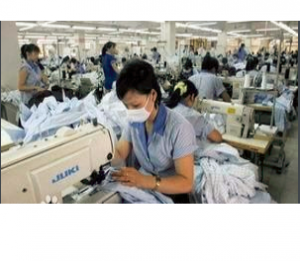The rise of manufacturing in Vietnam has clearly hit some Chinese industries and companies that rely solely on low labor costs. In 2006, 700 Taiwanese businesses in dongguan were forced to close due to lack of labor, accounting for about one-half of the local Taiwanese businesses. Most of the closed factories are labor-intensive textile and toy OEM factories. Meanwhile, Taiwan invested China Mainland $3.59 billion in the first eight months of 2006, down 18.3% from the same period in 2005. The pace of foreign investment in China has slowed as well. The commerce ministry said foreign direct investment in the january-august period of 2006 was $37.99 billion, down 3.02 percent from the same period a year earlier and the first decline since 1999.
But the real threat goes far beyond manufacturing. Vietnam, which has the advantage of being a late mover, is clearly building its own new future. For example, some people thought that Vietnam could not afford high-end coffee, but soon the involvement of multinational companies brought Vietnam not only abundant capital, but also advanced management. Vietnam has shaken off a history of no high-end coffee, and the high value-added value of high-end brands has earned the country a higher return on investment. In the IT sector, high-tech investment and manufacturing transfers have clearly eaten into the high-end share of Chinese factories. Made in Vietnam has begun to make efforts to “smart”, perhaps, the future can be strong rise of Vietnam’s high-tech is the real tough role.

In fact, the manufacturing has been at the bottom of the “smiling curve”, Chinese enterprises must accelerate its industrial upgrade, from rubber to coffee, from Mickey Mouse to chip, Vietnam manufacturing’s biggest significance maybe let China alert, original labor price, policy and geographical advantages, are actually weak, unless our country and the enterprise can more quickly to “smart”.
Moreover, the shift of manufacturing to Vietnam is no bad thing for China. In the face of cost pressure, the coastal manufacturing industry is facing the task of transformation and upgrading. The transformation and upgrading does not mean that the manufacturing sector is rapidly disappearing in the coastal areas. It is more likely that the manufacturing industry will develop towards a higher value-added and more refined level within the traditional characteristic industrial areas in the coastal areas.
“Made in Vietnam” is a complement to “made in China”, but it cannot replace “made in China”. Because Vietnam, with a population of over 80 million, cannot support that much production capacity. However, the global dominance of “made in China” over the past decade will change. With the rise of global trade protectionism against “made in China” and the appreciation of the renminbi, the advantage of “made in China” will diminish, and the breakthrough of trade barriers such as tariffs will inevitably lead to a global pattern of “diversified” manufacturing. However, ‘made in China’ still has irreplaceable advantages. First, China has a complete industrial chain, second, it has a skilled labor force, and third, China has a huge domestic consumer market.
The impact of the emerging market in Vietnam on China is an inevitable rule of international economic development and a necessary step for China to move towards the medium-high end. If China, like Vietnam, continues to grow at the middle and low end, it will not be allowed to do so because of the environment and resources, and because it will be at the lower end of the industrial chain. At this stage, China’s only task is to develop itself, maintain social stability and make the surrounding environment stable, especially the geopolitical relationship with Vietnam stable.